1968–82 Chevrolet Corvette (C3) buyers guide
The C3 Corvette lived in a turbulent era for the automotive industry, but it remained America’s flagship sports car with styling that went from 1960s radical to the fiberglass embodiment of ’70s automotive excess and cutting-edge computerized improvements. It was going to take a stunning design to be a worthy successor to the impressive 1963–67 Corvette (C2), and that’s why you might want one.
So let’s get a high level overview of every year of C3 Corvette, and highlight special editions so you’ll know which Corvette is best for you.
1968

The 1968 Corvette started life as a design based on the 1965 Corvette Mako Shark II concept: that impossibly long hood, those voluptuous fender flares, swept doors with flush-mount handles, and a low and elegant rear deck all made it from concept to production in both a hardtop coupe (with removable T-top panels) and a convertible.
Under that shark-like skin were components familiar to C2 Corvette fans, including the fully independent suspension, four-wheel disc brakes, all engines, and transmissions—except the two-speed Powerglide automatic was replaced with a three-speed Turbo Hydra-Matic. Engine choices started at a 327-cubic-inch V-8 with 300 horsepower, another 327 V-8 with 350 (L79) hp, and several big block 427-cu-in V-8s with 390 (L36), 400 (L68), 430 (L88), or 435 (L71, or L89 w/aluminum heads) output.
The C3’s interior had numerous optional upgrades: tinted glass, air conditioning, power windows, power steering, tilt-telescope steering column, AM/FM radio or stereo, headrests, leather seating, rear window defogger, and a factory installed alarm system.
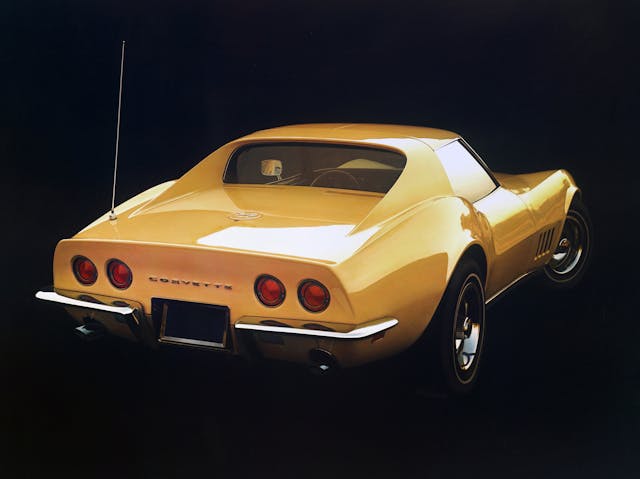
Adding to the options list were 10 exterior colors and seven interior colors, so the number of C3 configurations for 1968 were staggering. Base price for the hardtop was $4663 (about $34,600 today), and the convertible was $4320 ($32,000). While first-year build quality issues plagued the 1968 Corvette, that didn’t stop more than 28,000 units from rolling off the factory floor. This was a significant improvement over the previous year’s sales, and proved that the Corvette’s style, power, and handling were a hot commodity for American sport car enthusiasts.
1969

As with many second-year designs, changes were minor but focused on improving the faults of the first-year implementation. The frame was stiffened to reduce chassis flex, wheels grew from 7 inches wide to 8 inches wide, reverse lights were integrated into the inner two brake lights, the Stingray name now rested atop the fender vents, and the previous year’s flush-mount door handles released the latch and opened the door, eliminating the push button release (in the lock cylinder) from ’68. The vacuum-operated windshield wiper door now had a manual override to keep it from freezing up in winter months, while a new headlight washer system was implemented. Two notable exterior options for 1969 were the side exit exhaust pipes and a luggage rack for the trunk.

Interior changes included redesigned door panels with an integrated grab handle and deeper recesses for more elbow room, along with a smaller steering wheel for easier entry/exit. In addition, the ignition switch moved from the dashboard to the steering column, a headlamp warning light illuminated if the headlight doors didn’t fully open, and there was now a storage bag on the dashboard to compensate for the lack of a glove box.

Powertrain changes for ’69 included a standard 350-cu-in V-8 replacing the previous year’s 327, optional aluminum heads (L89) for the L71-spec 427-cu-in V-8, and the extremely rare ZL1 option was the range-topping big-block V-8. Sporting an all-aluminum engine designed for race applications with horsepower figures likely underrated to match the 430 horsepower L88, the ZL1 offered top performance but with an eye-watering price premium: more than $5000 ($35,000!) for both the engine and mandatory performance options. If an owner bought a zero-option 1969 Corvette and opted for the ZL1, the price would more than double. This is likely why it is believed that only two ZL1 Corvettes were produced.
The 1969 Corvette sold 10,000 units more than the already popular ’68 model, a high watermark not to be surpassed until 1976.
1970

A new egg-crate grille welcomes onlookers of the 1970 Corvette, and its texture is emulated in the revised fender louvers. New front signal lights filled each corner; square cutouts for the exhaust were integrated into the rear end (as last year’s side pipe option was deleted).
New seats adorned the interior, offering an extra inch of headroom and a more ergonomic seat-belt design, and integrated headrests added extra comfort and safety. A new upgrade package was also available for buyers of black or saddle interior colors that included woodgrain accents, leather seats, and shifter boot (manual transmissions only), and upgraded carpeting.

Powertrain changes were significant: a new small-block LT1 V-8 was produced with SCCA racing in mind, sporting solid lifters, 370 horsepower, and a redline of 6500 rpm. LT1 engines are also noteworthy for their unique hood and hood graphics. There was an additional ZR1 option package that included numerous engine, transmission and suspension upgrades for almost $1000. Production was limited to 25 units, likely because the ZR1 deleted the availability of creature comforts like air conditioning, power windows, and even a radio.
Big-block Corvettes upped their displacement from 427 to 454 cubic inches, with outputs of either 390 horsepower in the LS5 or 460 horsepower in the LS7. Sadly, a last-minute change ensured the LS7 wasn’t made available to the public, a victim of policy changes within General Motors.
Hardtop Corvette prices jumped hundreds of dollars to a base price of $5192, while the convertible rose to $4849, and sales dropped to their lowest (17,316) since 1962—likely because of a shortened production schedule stemming from a historic 136-day long UAW strike in 1969.
1971

Modest changes made way in 1971, mostly stemming from ever-tightening federal vehicle emissions requirements that mandated lower compression ratios and the forthcoming use of unleaded fuels and catalytic converters. The LT1 lost 40 horsepower and the LS5 lost 25 hp, but a new aluminum-headed LS6 big-block entered the fray with a robust 425 horses. Sadly, this was only the start of the C3 Corvette’s power reduction.
The ZR1 performance package for LT1 variants was still available, and an all-new ZR2 package emulated the former—but for the LS6 big-block V-8. Both option packages garnered few sales ( ZR1, eight units; ZR2, 12 units), as they continued with the previous year’s restrictions of making creature comfort options unavailable while adding a hefty premium to the sticker price ($1010/$1747 for ZR1/ZR2).
Pricing jumped once again ($5496 hardtop, $5259 convertible), but sales remained strong with more than 21,000 units produced.
1972

Changes were even more limited for 1972, as the positraction axle and vehicle alarm system became standard features. Powertrain options were further limited, as the range-topping LS6 big-block V-8 was scrapped (along with the ZR2 upgrades), and the remaining three motors lost power due to emissions controls and a conversion to the (more realistic) SAE Net horsepower calculations: the base 350-cu-in V-8 was now at 200 horsepower, the LT1 at 255, and the LS5 big-block at 270. LT1s were now available with air conditioning to go with the high revving engine, the production number estimates hover around 200 units for this truly rare combination.
Production remained strong with 20,496 units sold, thanks in part to the removal of the Federal Excise Tax from the Revenue Act of 1971. Corvette coupes had a base price of $5533, and came in at $5296.
1973

Many functional changes were made on the Corvette’s 20th anniversary, yet the efforts were made to meet changing government regulations while still keeping the Corvette appeal alive. Most noticeable was the change from a chrome front bumper to a color-keyed plastic bumper (there was a metal one behind it) that made the 1973 Corvette longer and about 30 pounds heavier in the nose. Less noticeable were the redesigned fender vents, replacing longer using grilles instead opting for an open slot design. A longer hood went up to the cowl, incorporating the area formerly reserved for the wiper cover, and included a cool air intake that opened via solenoid.
The rear window was now fixed, and the deletion of its storage space increased cargo room. Redesigned body mounts and new sound-deadening material kept noise, vibration and harshness levels down. Federally mandated side impact beams added weight to the doors, while switching to steel-belted radials made for better overall performance on the street (superior ride, wet weather traction, high speed stability). Optional cast aluminum wheels improved performance further by reducing rotational mass by eight pounds at each corner: this was a rare option with only four units being made, but this wheel fared better after 1973.

Powertrains continued going downhill, as the base 350-cu-in V-8 (L48) made 190 horsepower, the optional L82 made 250, and the last remaining big-block (LS4) made 270 horsepower. These were SAE net ratings, so while the numbers are significantly lower, Corvette performance was still competitive among sports cars sold in the USA.
A special Z07 option package included uprated springs, a thicker front sway bar, and upgraded front brake hardware. While air conditioning was not available with this option, there were fewer ordering restrictions relative to the outgoing ZR1 and ZR2.
With 10 exterior and four interior colors available, buyers of the 30,464 Corvettes made in 1973 still had plenty of choices. The base price increased slightly for both body styles (coupe $5562, convertible $5399), but the C3 was clearly improving at the same time.
1974
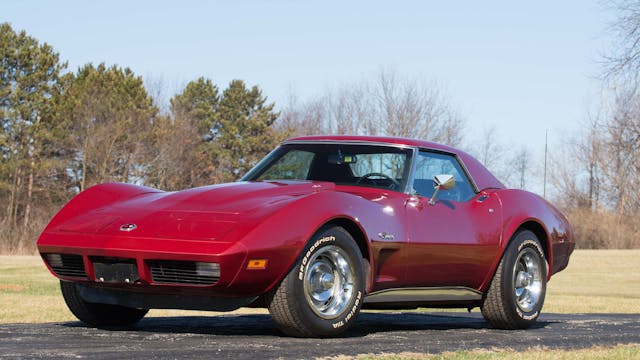
The 1974 Corvettes are easily spotted as their rear bumper matches the plastic front bumper from ’73. The rear bumper was a one-year-only design with a unique slant-back crafted from two pieces that split the bumper vertically down the middle.
Several items ended their tenure with Corvettes in 1974, as it was the final year for the 454 big-block V-8, for leaded gas, and for the lack of a catalytic converter in the exhaust system.

This year also saw the implementation of shoulder and lap belts integrated into a single assembly (coupes only), a more efficient radiator and turbo hydramatic automatic transmission, exhaust resonators for improved engine tone, a five-horsepower bump for the base 350 V-8, and a new Gymkhana suspension.
The FE7 Gymkhana suspension sported uprated springs and a thicker front sway bar. The still rare Z07 package combined FE7 with front brake upgrades for improved track performance, but it was still unavailable on Corvettes with air conditioning.
The changes certainly altered the Corvette’s tone from raucous sports to comfortable grand tourer, but the C3 sold very well: 37,502 units, of which 32,028 were coupes ($6002) and 5474 convertibles ($5766).
1975

The Corvette once again received changes to its bumpers: both front and rear received a pair of mini bumperettes (for minor contacts like in a parking lot), and the rear was now a single piece plastic affair. Now with a single catalytic converter in place, engine options were limited to a 165 horsepower or optional (L82) 205 horsepower, 350-cu-in small-block V-8.
General Motors’ famous HEI ignition system was now standard, the removal of points and condensers added further refinement to the cleaner running 1975 Corvette. Speaking of clean, a redesigned fuel system kept harmful vapor from escaping into the air.
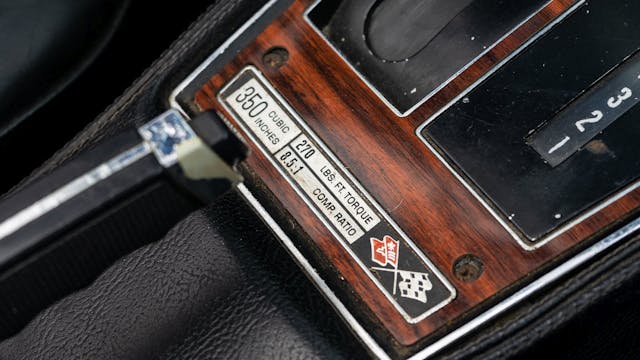
Noteworthy options include last year’s FE7 Gymkhana suspension, the return of the Z07’s suspension, and brake upgrades at the expense of ordering air conditioning.
Horsepower may still be dropping, but sales strengthened; even with a base price of $6810 (hardtop), a robust 38,465 Corvettes found homes in 1975 and most were coupes—only 4629 convertibles were sold. Which is important to note for next year.
1976

Even with a base price almost $1000 higher than the previous year, the Corvette sold an astounding 46,558 units of what would be the last Corvette to wear the Stingray designation (until the 2014 C7 Stingray). All were hardtops as the convertible was phased out due to low demand and anticipated changes to federal safety standards.
While power didn’t increase to pre-emissions levels, the base L48 gained 15 horsepower (180 hp) and the L82 gained five horses for a total of 210. Corvettes sold in California were only available with the L48 and a mandatory automatic transmission (Turbo Hydra-matic 350, not the 400 used elsewhere), while a mid-year improvement included standard power steering and brakes for all variants. The Z07 performance package was no longer available, but the FE7 Gymkhana suspension remained.

A steel heat shield was bolted between chassis crossmembers to shield the cabin from heat generated by the catalytic converter, and because of its location added extra structural integrity. The aluminum wheels originally introduced in 1973 were now ready for prime time, readily available in mass quantities. A new induction system injected cold air from the front, routed above the radiator, which replaced the more restrictive and louder cowl induction setup. Because of this, the Corvette received a new hood, unique to this year as 1977 saw more changes. The rear bumper changed once more, offering Corvette emblems either spelled out (like in ’75) or a new one-piece emblem recessed into the plastic body.
While air conditioning was still optional, GM’s long standing Astro Ventilation system was deleted, including the vents near the rear window. A new steering wheel shared with other Chevrolet products (including Camaro and Vega) was introduced, but this parts-bin sharing effort only lasted one year.
1977
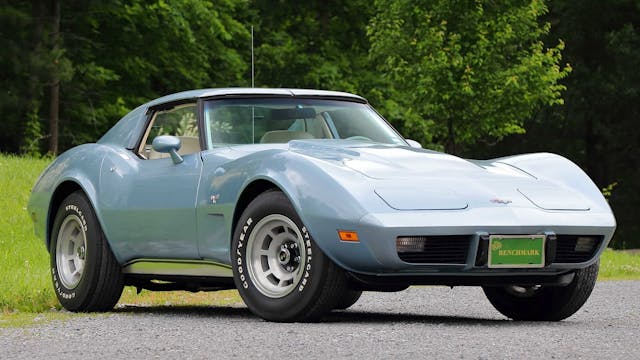
This year Chevrolet celebrated production of the 500,000th Corvette, finished like the first model in Classic White with a red interior. The Corvette’s popularity throughout the turbulent 1970s continued this year, as sales reached 49,213 units, even with the ever rising base price now set at $8648.
Powertrain changes were limited to a mid-year change from “Chevy Orange” engine paint to blue, but more was in store for the interior. Interior access and driver’s safety was improved by a shorter steering column, while the dashboard sported easier-to-read gauges. A new center stack with redesigned HVAC controls and incorporated standard Delco radios seen elsewhere in the GM lineup: this allowed for an all new 8-track tape option (UM2). Headlight dimming and windshield wiper controls were now located on the steering column stock, while sun visors now rotated 90 degrees to shield occupants from sun in the side glass.
A new cloth interior and floor mats with color-keyed carpet inserts were both optional, while an upscale leather-wrapped wheel was also available. Body color sport side view mirrors were implemented, including interior controls to move the mirror without the need to roll the window down to adjust it. Corvette was clearly growing up to be a more popular and approachable sports car, with features that would be standard in many cars in the coming decade.
1978

Chevrolet celebrated the Corvette’s silver anniversary with two special editions: the aptly named “25th Anniversary” and the Indy 500 Pace Car replica, as Corvette also paced the legendary race. Powertrain changes were limited to the base L48 losing five horsepower, while the optional L82 gained 10 horsepower and had an optional close-ratio four-speed manual for extra performance. This was the first year for optional dual rear speakers and the signature fastback bubble glass, eliminating the C3’s cramped cargo area and helped rear visibility tremendously.
The 25th Anniversary cars were finished in two-tone silver/gray with unique pinstriping and the mandatory inclusion of aluminum wheels and sport side mirrors. Indy 500 Pace Car replicas were also two-toned but using black over silver with a unique front air dam and rear spoiler. Pace Cars were delivered with door and quarter panel decals replicating the Pace Cars livery, while loaded inside with unique seats upholstered in shimmering silver leather, every interior option with the choice of 8-track or a CB radio. It should come as no surprise that the Pace Cars sold for over $4000 more than a base Corvette.

All 1978 Corvettes wore the 25th Anniversary exterior emblems, while new details further improved the interior: a new gauge cluster inside a squared off bezel, revised door armrests, and a glove compartment was added to the passenger side of the dashboard. Both the standard fiberglass and the new optional glass T-top panels were designed to give more headroom and were both lockable and interfaced with the standard anti-theft system in case of tampering.
Wider 255/60/15 tires were optional, but a smaller spare tire was mandated so that all Corvettes implemented a plastic-lined, 24-gallon fuel tank. The FE7 Gymkhana suspension added uprated shocks and a rear sway bar to the performance portfolio of previous years. While sales dipped slightly, production totaled 46,776 units even with a higher base price of $9351.
1979

The C3 Corvette was giving Chevrolet what it wanted: more buyers for a higher asking price. Starting at $10,220 ($36,335 today) and moving an amazing 53,807 units, the 1979 Corvette featured standard air conditioning, power windows, AM/FM radio, and a tilt-telescope steering column.
New items for ’79 included a slew of new, optional features, including high-back bucket seats and front/rear spoilers lifted from the 1978 Pace Car, tinted glass T-top panels, and an illuminated passenger visor mirror. Thanks to revised mufflers and a dual snorkel cold-air intake (now standard), both the L48 and optional L82 engines received a power bump (195/225 hp). While the Gymkhana suspension was still available, other Corvettes received a single shock-absorber calibration, no matter their transmission.
1980

While the speedometer read up to only 85 mph, the 1980 Corvette improved with few sacrifices over ’79. Most noticeable were new front and rear fascias, incorporating the aerodynamic tweaks of the 1978 Pace Car’s body kit, which lowered the coefficient of drag from 0.503 to 0.443—a significant improvement for the era and a harbinger for the future of automotive design. The same applied to the standard front cornering lamps, commonplace on Cadillacs, which light up when the amber signal light is activated and would become a C4 Corvette design trademark.
A new emblem greeted onlookers, while extensive use of aluminum (intake manifold for both engines, differential case, front crossmember) and lower-density fiberglass (T-tops, hood, door skins) reduced weight by about 250 pounds.
For buyers opting for cloth instead of the standard leather, a linear, more contemporary fabric was implemented, while the storage nooks behind the seats went from three compartments to two (the volume did not change). The driver’s side visor incorporated a second shield for side window coverage, and a new interior convenience group included a delayed interior light system, headlight warning buzzer, low-fuel warning light, and intermittent wipers.
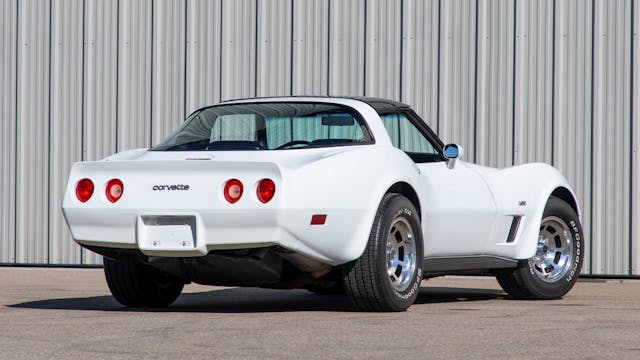
All these improvements met with aforementioned sacrifices in the powertrain department. The base 350-cu-in V-8 (L48) lost five horsepower for cleaner emissions while the L82 gained five horsepower (230 total), but it lost its manual transmission option. California residents received a mandatory 305-cu-in LG4 V-8 with tubular exhaust headers, a computer controlled carburetor, and 180 horsepower. While having only 10 less horsepower than the L48, the LG4 also had a mandatory automatic transmission.
So, while the 1980 Corvette both giveth and taketh features from future owners, 40,614 units sold with a base price of $13,140.
1981
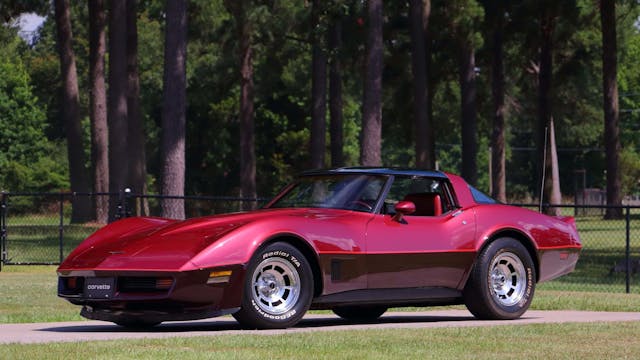
This was the year the Corvette (GM Y-body) moved to a new, dedicated assembly line in Bowling Green, Kentucky. For a short period of time both old and new factories were making 1981 models concurrently. In the interest of fuel economy regulations, all 1981 Corvettes used a single powertrain: a 350-cu-in V-8 (L81) with a similar computer-controlled carburetor system as 1980’s California-only LG4 V-8. The L81 featured lightweight magnesium valve covers, tubular headers, and 190 horsepower with either a manual or automatic for buyers in all 50 states.
Thanks to the L81’s computer, all Corvettes with automatic transmissions now had an electronically-controlled lock-up torque converter for improved highway fuel efficiency. Curb weight also benefited from the transition from steel (44-pound) transverse leaf spring to a mono-leaf fiberglass (8-pound) unit, but only for automatic models without the Gymkhana suspension.
Interior accommodations improved from a more ergonomic dashboard with auto tuning radios, a standard clock, optional cassette tape player, and an optional six-way power seat (with recliner) for the driver. Exterior changes were limited to new, two-tone color schemes now possible thanks to Bowling Green’s modern paint facility. And with these improvements came another good year in production: 40,606 units were sold even at the lofty sticker price of $16,259 ($46,168 today).
1982

The C3’s final year of production was about 15,000 units less than last year, but that doesn’t mean this generation ended with a whimper. Rather it ended with a bold vision for the brand’s future, as the Corvette now sported a fuel-injected 350-cu-in V-8 and GM’s new computer controlled 700-R4 overdrive transmission. These are two reasons why the base price went up about $5500, but power also went up to a full 200 horsepower, while lowering emissions and fuel consumption significantly. The new “Cross Fire Injection” V-8 had fender-mounted emblems stating the Corvette’s new technology, but sadly it was only available with the overdrive automatic transmission.
Very little changed elsewhere for 1982; the interior clock gained quartz movement precision, and new two-tone color schemes were available. But this is not including the C3’s swan song send off: the 1982 Collector’s Edition.
Collector’s Edition Corvettes wore a bevy of unique trim features but, most importantly, wore a unique technical improvement that future (C4) Corvettes embraced: a liftback rear window with twin gas shocks for instant cargo access. This package was $4000 over the base 1982 Corvette’s asking price but included unique turbine spoke aluminum wheels, champagne-hued exterior paint with bronze and brown hued graphics, cloisonné accented emblems shaped to foreshadow the C4’s upcoming logo, leather interior with shades of silver and charcoal on the seats and door panels, a unique leather wrapped wheel and horn pad, and a unique VIN to ensure the Collector’s Edition doesn’t fall prey to counterfeits like the 1978 Pace Car.
There’s little doubt that the 1968–82 C3 Corvette rode the roller-coaster changes of this era with style and continuous improvement to its platform. The only question is, what year and options would you want?
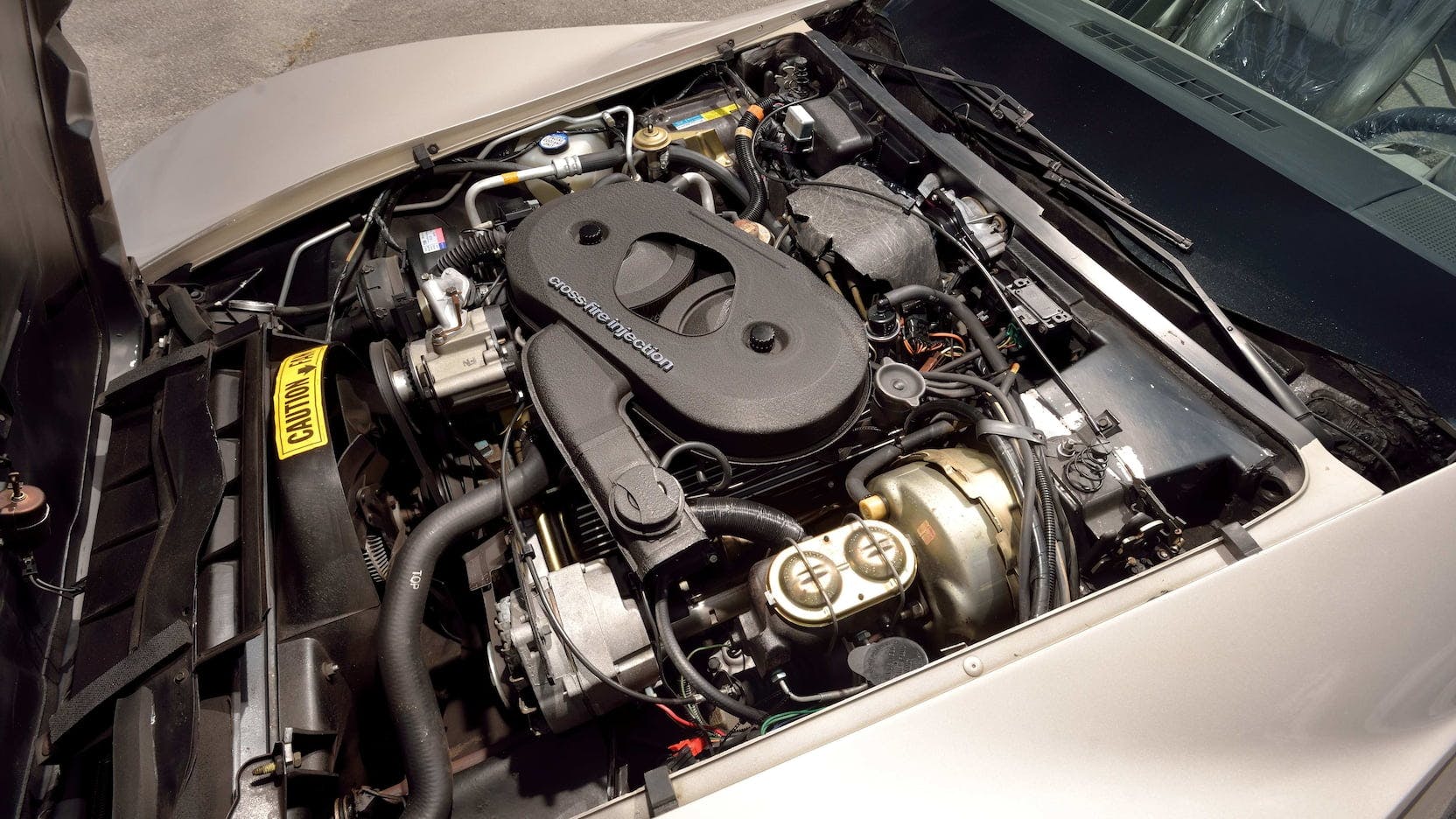
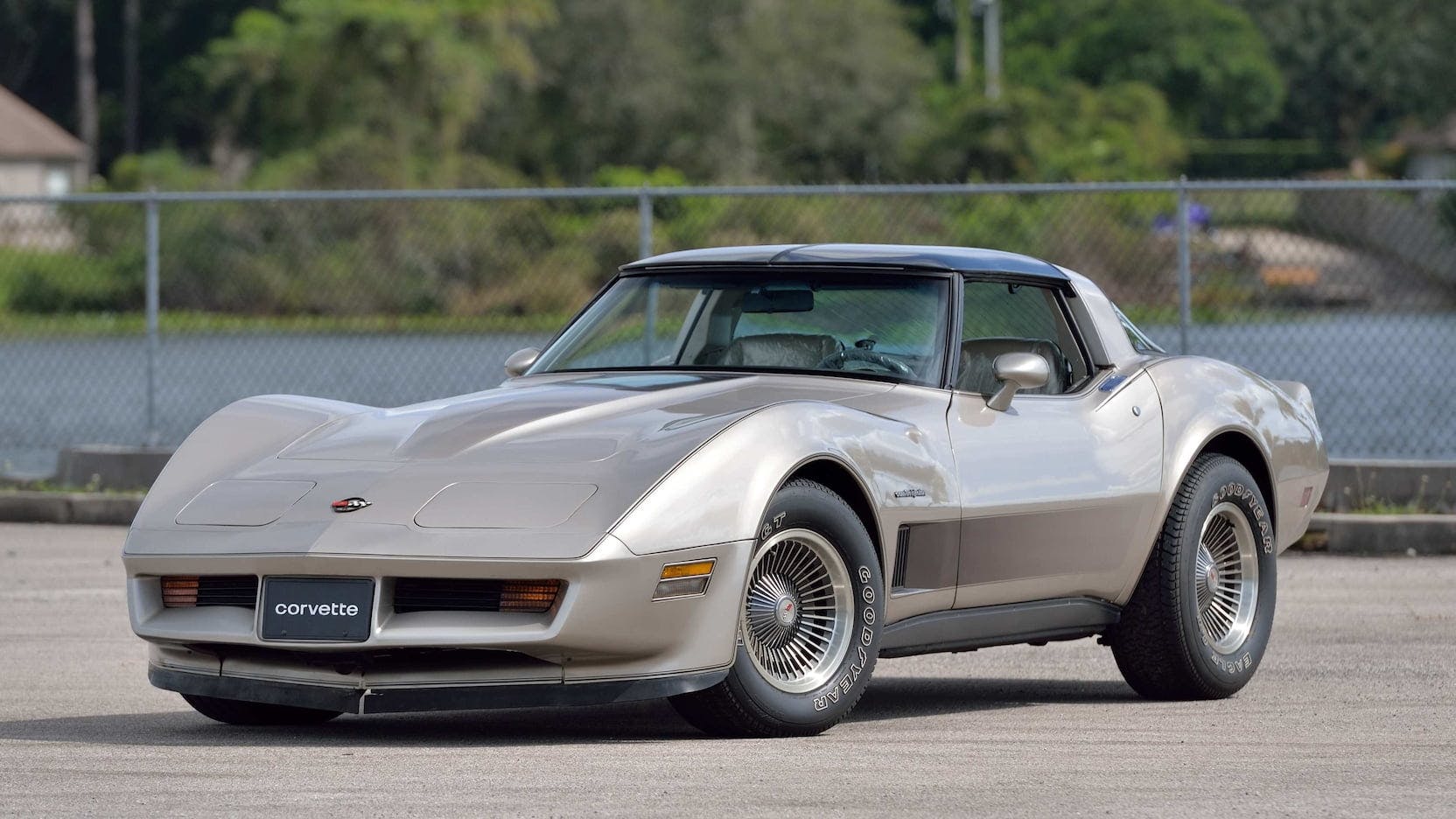
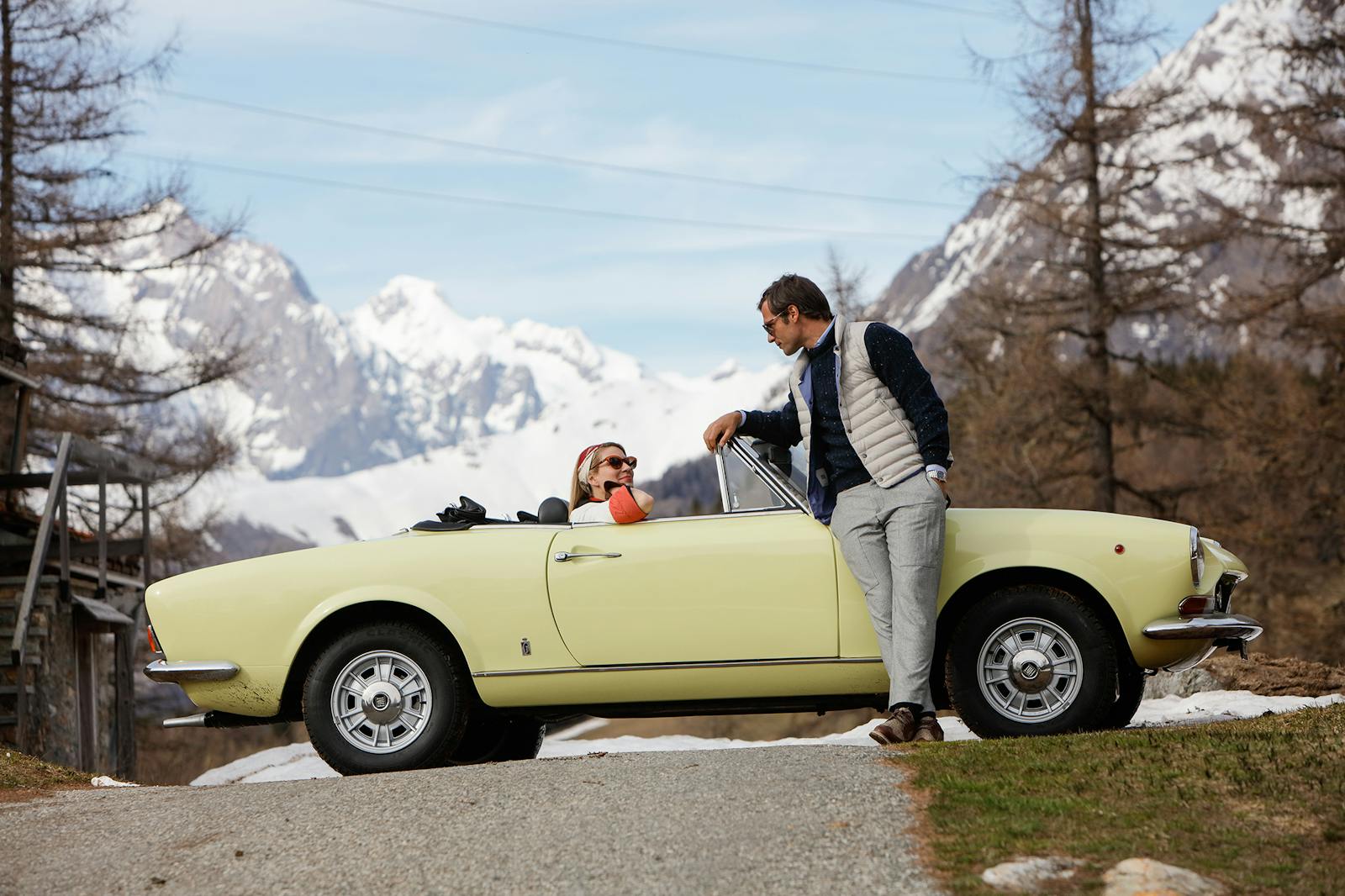

I own a 1982 c3. It seems that the actual nose on the earlier model like 1979 was just a bit longer.. is this true?
I have a 1982 corvette with a 427 cubic inch motor, convertible. How much is it worth?